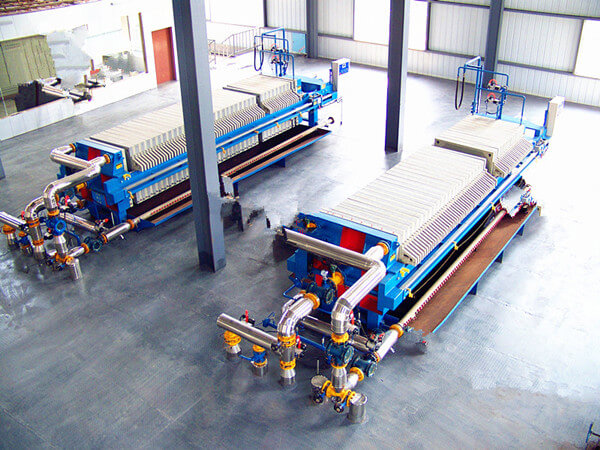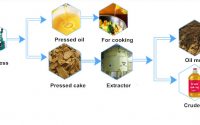Cottonseed Oil Extraction Plant
Introduction to Cottonseed Oil Extraction Plant
Cottonseed oil extraction plant adopts solvent extraction method to extract cottonseed oil. The cottonseed oil plant includes cottonseeds pretreatment and prepressing workshop, cottonseed cake solvent extraction workshop and crude cottonseed oil refinery plant. The residual oil rate in the cottonseed meal is lower than 1%. Cottonseeds contain a toxic pigment which called gossypol, of which the content is 0.15%-1.8%. Cottonseed kernels contain 0.5%-2.5% of gossypol. After processed by the cottonseed oil refinery plant, the gossypol content in the oil is less than 0.01%. The products of the cottonseed oil processing plant are cottonseed oil, cottonseed meal, cottonseed hull, and soapstock.

Features of Cottonseed Oil Processing Plant
1. Cottonseed oil mill plant has high automation degree, continuous operation, saving labor.
2. The pre-pressed cake has low residual oil rate and is easy for solvent penetration.
3. Cottonseed oil extraction plant has multiple oil extractors for selection and advanced mineral oil system.
4. Adopting negative pressure evaporation system, saving energy and reducing steam consumption.
5. Low residual oil rate in the meal, good oil, and meal quality.
The Process of Cottonseed Oil Plant
Section I: Cottonseeds Pretreatment and Prepressing Workshop

If your cottonseeds are with lint, then you need to add cottonseed delinting machine in the cottonseed oil plant.

Section II: Cottonseed Cake Solvent Extraction Workshop

Oil Extraction
Oil extraction is using the organic solvent to extract oil from the pre-pressed cake inside the oil extractor. Multiple oil extractors such as loop type extractor, rotocel extractor and towline extractor can be used for the cottonseed oil extraction plant. After oil extraction, miscella and the solvent containing wet meal are obtained. The miscella is pumped into the hydrocyclone to remove the fines and then the miscella enters the miscella tank in the cottonseed oil extraction plant.

Wet Meal Desolventizing
The wet meal from the oil extractor enters the DTDC desolventizing the cottonseed oil extraction plant.After pre-desolventizing, desolventizing, drying, and cooling, the solvent is removed and the dry meal is obtained and sent to the meal storehouse for packaging. There is automatic feed valve on the desolventizing layer to keep constant material level.
Evaporating and Stripping
The miscella in the miscella tank enters the first long tube evaporator, the second long tube evaporator and the disk stripping column to remove the solvent. The whole system works under negative pressure. The crude oil obtained goes to the cottonseed oil refinery plant.
d. Solvent recovery: The solvent vapor enters the condensing system. The solvent recycled enters the solvent holding tank for circulation. The wastewater is discharged into the water seal tank. The vent gas in the cottonseed oil extraction plant enters the mineral oil system for further recovery of solvent. Solvent recovery can reduce solvent consumption and ensure safe production.

Section III: Crude Cottonseed Oil Refinery Plant

1. Degumming
Phospholipids are easy to adsorb bleaching clay and reduce bleaching effect. Meanwhile, the gossypol in the crude oil can react with phospholipids to form bound gossypol which can’t be removed. By degumming, the filtered cottonseed oil is preheated and phosphoric acid is added to change nonhydratable phospholipids into hydratable phospholipids.
2. De-acidification
Cottonseed oil is mixed with alkali which reacts with free fatty acids to form soapstocks. The mixture is centrifuged to separate the soapstocks from oil. The soapstocks have strong adsorbability and can adsorb some pigment, protein, phospholipids, mucilage and other impurities. The free gossypol also reacts with alkali to form the salt, which is adsorbed on the soapstocks to be removed. The oil is washed with hot water to remove the residual soapstocks. The wastewater is separated from the oil in a second centrifuge. The oil is then dehydrated under vacuum.
3. Bleaching
The degummed and neutralized oil is mixed with bleaching earth and then the mixture is sent into the bleaching tower in the cottonseed oil refinery plant. By heating under vacuum, the residual gossypol and other pigments in the oil are adsorbed on the clay. The mixture from the bleaching tower is pumped into the leaf filter to remove the waste clay.
4. Deodorization
The bleached oil is pumped into the deodorization tower in the cottonseed oil refinery plant to remove the free fatty acids and odor substances so that to improve the flavor, stability, color, and quality of the oil. The deodorization process is performed under high temperature and high vacuum.
5. Cottonseed Oil Fractionation Plant

Cottonseed oil fractionation plant can obtain liquid oil and solid fat by cooling crystallization and solid-liquid separation. The plant has the features of advanced technology, fully automatic, high liquid oil yield and high solid fat purity. Cottonseed oil contains a fair amount of saturated fatty acid and thus has a high melting point. At low temperature, part of triacylglycerol crystallized and precipitated, which restricts the application, transportation and trade of cottonseed oil. By cottonseed oil fractionation, liquid oil and solid fat are obtained. The liquid oil can be used to make mayonnaise and salad dressing. The solid fat can be used for the manufacturing of frying oi, margarine, shortening, cocoa butter substitute, etc.


